How a remote programme transformed my baby’s nightmarish sleep cycle
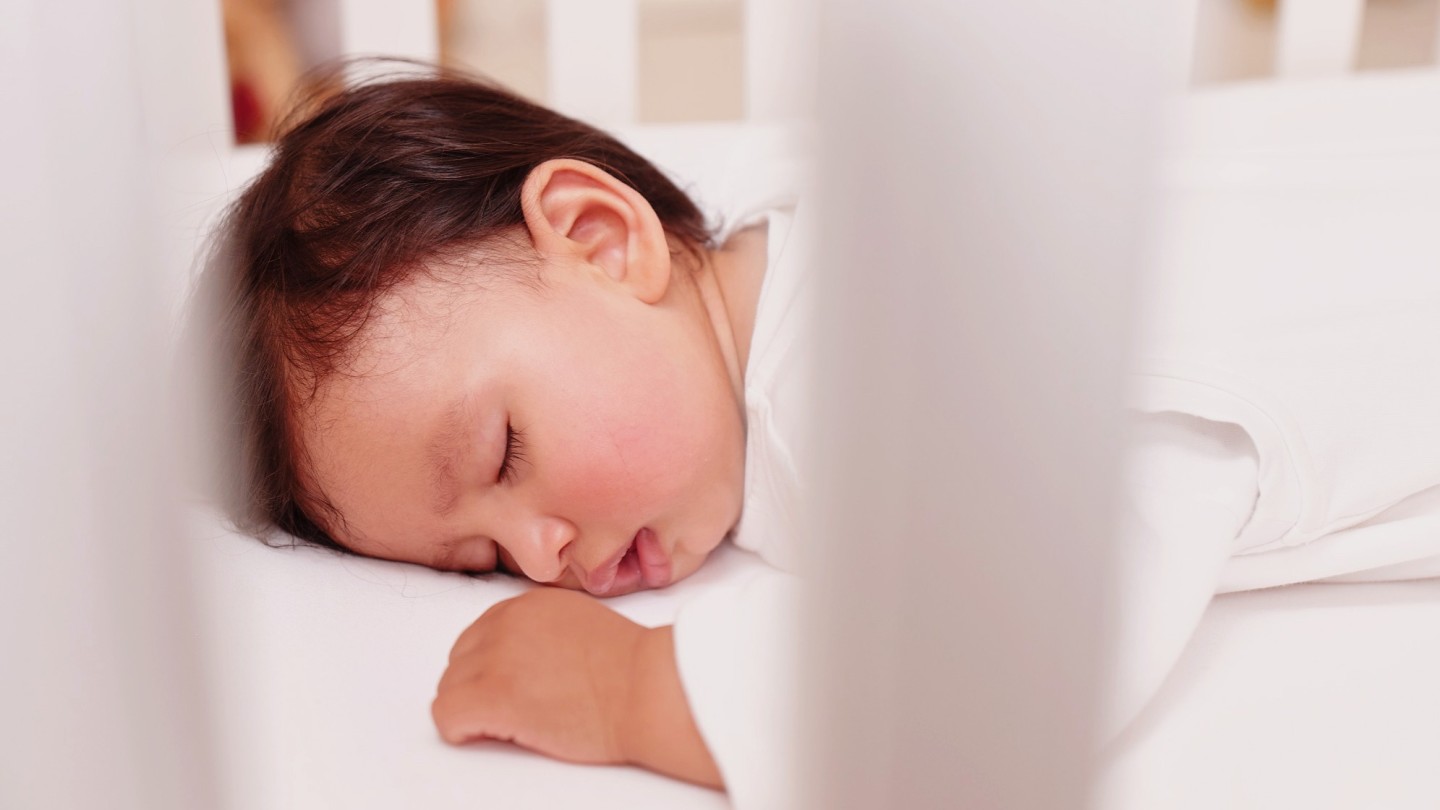
Roula Khalaf, Editor of the FT, selects her favourite stories in this weekly newsletter.
At 20 months old, my daughter Winifred’s sleep was regressing. She would wake in the middle of the night, needing warm milk and comfort, and then take forever to settle. Then came the 6am wakeups. My wife Georgia and I hoped it was a phase, but as the broken nights of sleep rolled on, Winnie’s habits became entrenched. With a second child on the way, we became desperate for sleep solutions.
When a friend recommended the US tech-based sleep school Batelle, which offers a remote two-week programme guaranteeing your child will sleep independently through the night (with a five-minute or less bedtime – all without using cry-it-out methods), I was initially sceptical. But the $1,500 fee was refundable if Winnie’s wakeups continued after the two weeks, and there would be support if she regressed again, up until her sixth birthday.
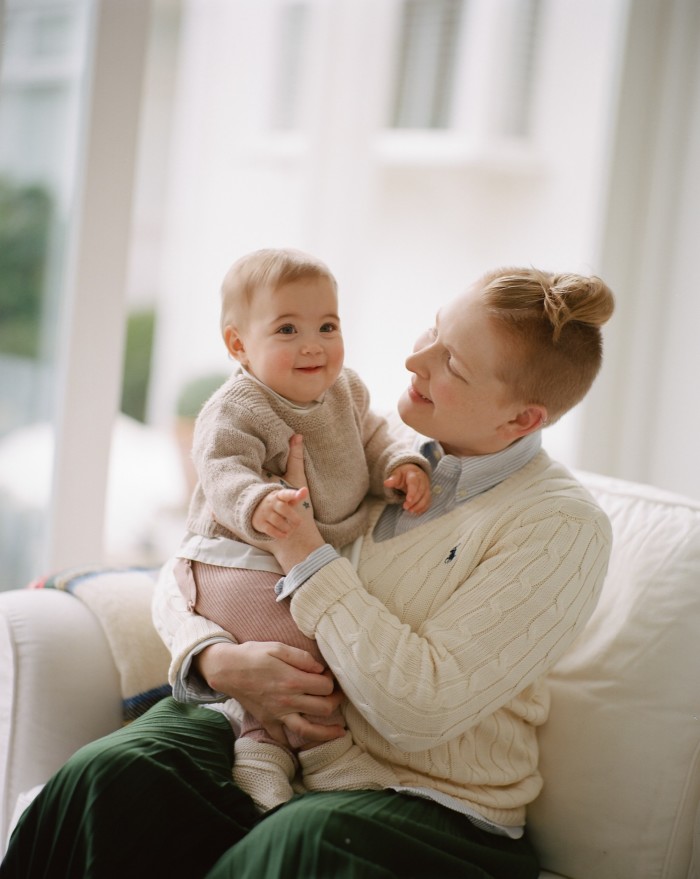
The welcome pack arrived. Inside was a selection of tools: a Ring camera, Hatch light, timer, Amazon Echo speaker, and a bed sheet called the Hug. Georgia and I joined the first of our daily Zoom briefings hosted by one of the company’s experts along with 20 other frazzled-looking parents who had logged in from other countries. We listened, asked questions, we were attentive: we all clung to the Holy Grail of routines: the 7pm-to-7am sleep cycle.
The Batelle programme is a 10-step method developed by Miss Megan, an expert in early child development, paediatric sleep and conscious parenting, repackaged as a digital programme by tech entrepreneur Damian Kimmelman, now Batelle’s CEO. Megan’s approach is designed to instil a set of expectations around sleep so the child always knows what’s happening and what’s next. This helps them develop trust in bedtimes and sleep – as predictability and consistency create a sense of familiarity.
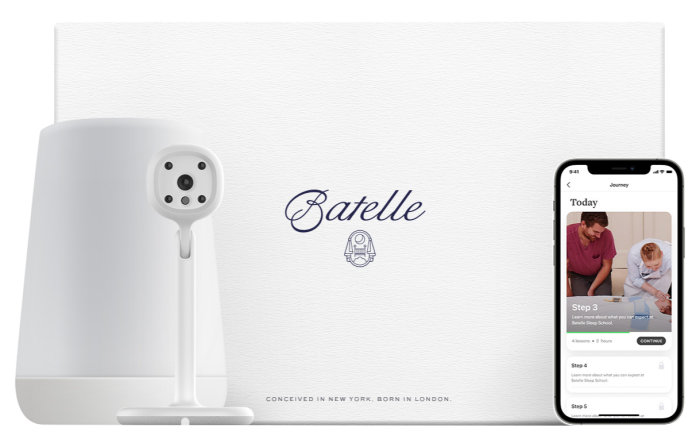
Central to Megan’s method, the Hug is a specially designed double layered sheet, which comes in various sizes to fit cots or a twin bed. The child fits in between the mattress and the top sheet, and the torso is zipped up in a style similar to a baby bag (but with the zip at the back), both keeping the baby in place as well as providing it with a feeling of extra security. We were initially hesitant about the sheet, as it essentially restrains the child, but did I mention that we were desperate?
Having reviewed Winnie’s daytime routine – splitting it into awake and sleep blocks – the Batelle team first recommended her lunchtime nap should be an hour earlier so she’d be sufficiently tired by bedtime. Simple but effective, this was an easy win. Then came the harder bit, incrementally shifting Winnie’s routine each day and night with new – and sometimes challenging – objectives.
For the first three nights the main aim was to get Winnie used to pre-recorded mantras – Georgia and I alternately singing “night night Winnie, night night” – which were played on a loop in her room during the night. Daytime play allowed Winnie to get her used to the Hug: we were advised to keep her in it for a minimum of five minutes, reading or playing with toys, or having a snack, so that she would get used to the sensation of being zipped in.
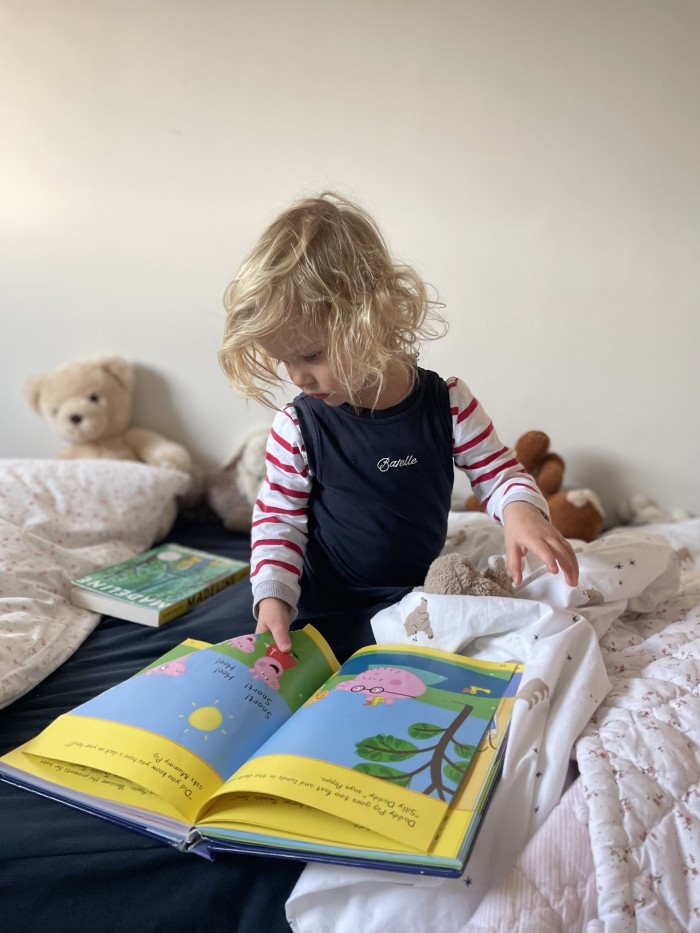
The fourth night was her first in the Hug. We were nervous she’d panic, but to our relief she happily obliged and seemed very content to sleep in it (she’s remained this way since). Over the subsequent ten nights, we worked on building additional skills, such as call and response – predominantly done over the monitor – until Winnie was independent and didn’t need me in the room at all after bedtime.
Throughout, one-on-one coaching sessions are also available if extra reassurance is needed, and there is 24/7 chat support via the smartphone app which we found especially helpful. We used it regularly each day to ask questions, and sometimes at night time where advisors were able to login to a live-stream camera and offer on-the-spot advice based on their observations of Winnie’s behaviour. On a couple of occasions when Winnie’s crying escalated in the small hours and it became apparent my soothing techniques were floundering, I used the app to receive guidance on what to do to get her settled. The support helped our confidence enormously.
It’s fair to say the programme requires a big commitment for any chance of it succeeding. At times I found the daytime play-based interactions a little fraught – the “games” considered so fundamental to get Winnie through the night made me feel extra nervous. But I am happy to report that Winnie has since graduated: having both transitioned from a cot to a bed, and is sleeping from 7pm to 7am with an easy four-minute put down. Some five weeks later, this is still the case. So far, the programme seems to be succeeding.
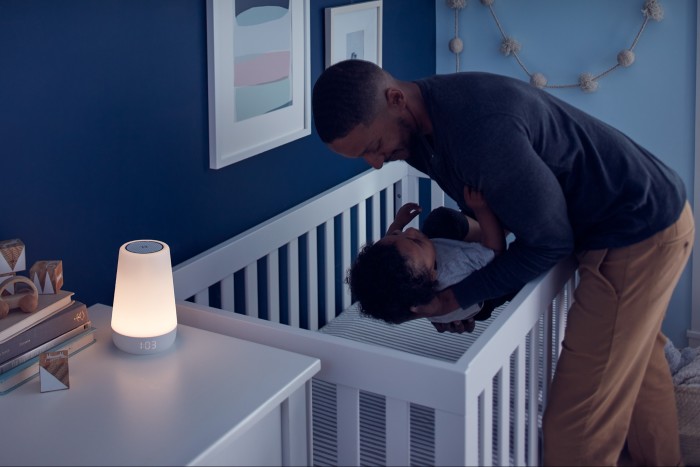
A remote sleep school like this won’t be for everyone: there’s not only the initial financial outlay but the consideration of time, and some may not be comfortable with the Hug. There are alternatives, however. Taking Cara Babies is a popular option in the US. Starting at $79, it’s run by Cara Dumaplin, a former neonatal nurse, whose 14-night plan for babies (of up to two years old) covers bedtime, night wakings, night weaning, early morning wake-ups and naps. In brief, for the first three nights, if the child is awake and fussing, the parent is allowed to “pop in” every 15 minutes to offer reassurance with a physical touch (but not pick up). After this, reassurance can only be given verbally. It can be accessed online in the form of video content, and print out sheets.
Alison Scott-Wright, the child sleep expert behind the book The Sensational Baby Sleep Plan, a resource for new parents who are breast- or bottle-feeding, and its 2021 sequel The Sensational Toddler Sleep Plan, is also available for consultations, helping with issues such as reflux, techniques for doing away with dummies and advice on if and when to switch to formula. Many testimonials attest to quick results. These sessions cost from £3 per minute for a phone call or £4 per minute for video-call.
Another author offering online support is Charmian Mead, who penned 7pm to 7am Sleeping Baby Routine. Her package, designed as a two-week support programme, is comparable to Batelle, and includes an initial video call, followed by a personalised plan, ten 30-minute calls and text message support over the two weeks at a cost of £800, or £1,200 with a home visit.
From my own experience, I would recommend a cost-effective sound machine and night light. The Hatch works brilliantly, and can either be controlled manually or through the smartphone app. By setting it to different colours and sounds, the baby quickly learns whether it’s sleep time or daily playtime.
But whatever method you decide on to help your child, my advice would be not to delay. The whole family has benefited from Winnie’s new sleep routine, including our new baby, Orlando.
Comments